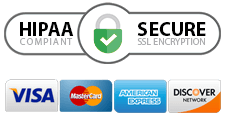As more states across the U.S. legalize medical marijuana, more people are exploring cannabis as a treatment option for chronic pain, anxiety, PTSD, and other health conditions. But if you’re new to the idea, you might be wondering: Is a medical cannabis card the same as a prescription?
The short answer is no — they are not the same thing. While both involve a doctor’s involvement and are used to treat health issues, there are important differences between a medical cannabis card and a traditional prescription.
Let’s break it down in simple terms so you can fully understand how it works — and why this distinction matters.

What Is a Medical Cannabis Card?
A medical cannabis card (also called a medical marijuana card) is a state-issued identification that gives a patient legal access to buy, possess, and use cannabis for medical purposes.
But here’s the key: a medical cannabis card is based on a doctor’s recommendation, not a formal prescription. The doctor evaluates your health, determines if you qualify under state law, and recommends that cannabis might help manage your symptoms.
Once that recommendation is approved, your name is entered into your state’s medical marijuana registry, and you can apply for the official card.
This card lets you:
- Purchase medical marijuana at licensed dispensaries
- Use cannabis products legally under state law
- Sometimes grow a limited number of plants (depending on your state)
- Get access to higher potency or larger quantities than recreational users (if your state has both programs)
What Is a Prescription?
A prescription is a formal order from a licensed doctor to a pharmacist to dispense a specific drug. Prescriptions are used for medications that are approved by the U.S. Food and Drug Administration (FDA) — like antibiotics, painkillers, antidepressants, or blood pressure medicine.
A prescription includes details such as:
- The exact drug name
- The dosage (how much to take)
- The frequency (how often to take it)
- The duration (how long to take it)
- The form (pill, liquid, injection, etc.)
When a pharmacy fills a prescription, it must follow these instructions exactly. It’s a highly regulated process — and for good reason. FDA-approved drugs go through years of testing for safety, effectiveness, and dosing guidelines.
Why Can’t Doctors “Prescribe” Medical Marijuana?
So why do doctors recommend cannabis but not prescribe it?
The answer has to do with federal law. Even though many states (including Florida and others) have legalized medical marijuana, cannabis is still classified as a Schedule I drug under federal law. That means the federal government does not recognize it as having any accepted medical use, despite growing scientific evidence and wide public support.
Because of this classification:
- Doctors are not allowed to write prescriptions for marijuana
- Pharmacies cannot legally stock or dispense marijuana
- Cannabis is not an FDA-approved drug in most forms
Instead, state programs allow doctors to recommend marijuana for specific health conditions. Patients then use their state-issued medical cannabis card to visit a licensed dispensary — not a pharmacy — to choose products that may help.
What Are the Differences in Practice?
Let’s compare the real-world experiences of getting a medical cannabis card versus filling a prescription.
With a Prescription:
- Your doctor writes an exact order: “Take 20mg of Drug X twice daily.”
- You go to a pharmacy where the pharmacist gives you exactly what’s written.
- The label tells you when and how to take it.
- Insurance may cover part or all of the cost.
- Follow-up is often required to continue the prescription.
With a Medical Cannabis Card:
- Your doctor recommends marijuana generally — not a specific strain or dose.
- You go to a dispensary and speak with a budtender (not a pharmacist).
- You choose from products like edibles, oils, tinctures, or flower.
- There is no standard dose — it’s based on your personal experience and guidance from dispensary staff.
- Insurance does not cover cannabis, so you pay out of pocket.
So while both options involve professional oversight, medical cannabis requires more personal responsibility. You may need to try different forms or doses before finding what works best — and that’s part of why having an experienced dispensary and a supportive physician is so helpful.

Is One Better Than the Other?
Not really — it depends on your needs and your condition.
Prescriptions are great for conditions where traditional medications have proven results. But for many people, especially those with chronic pain, anxiety, sleep disorders, or PTSD, medical cannabis offers relief that standard prescriptions haven’t provided.
In fact, some patients turn to cannabis when prescription meds cause side effects or aren’t effective on their own.
However, cannabis isn’t a one-size-fits-all solution, and it’s not for everyone. It’s always best to speak openly with a qualified physician who understands both medical cannabis and your health history.
Can I Have Both?
Yes, you can have both a prescription for traditional medicine and a medical cannabis card. In many cases, patients use medical marijuana to complement other treatments — not replace them entirely.
For example, someone with cancer may use cannabis to help manage pain, nausea, or sleep problems while also taking prescribed chemotherapy drugs.
Your doctor can help you decide how to safely use both, especially if you’re concerned about interactions.
The Bottom Line
A medical cannabis card is not the same as a prescription. A card is based on a recommendation, and it gives you legal access to a wide variety of cannabis products — but it doesn’t tell you what to buy, how much to take, or when to take it.
A prescription, on the other hand, is a precise, legally binding order from a doctor for an FDA-approved medication, filled by a pharmacist and usually covered by insurance.
If you’re thinking about trying cannabis as part of your treatment plan, the first step is understanding your options and talking with a doctor who specializes in medical marijuana.
Ready to Take the First Step?
Still have questions about medical cannabis? Wondering if it’s right for you?
Schedule a consultation with Cannabis Doctor X today. Whether you’re managing chronic pain, anxiety, or another qualifying condition, you deserve to explore every possible path to relief — and we’re here to guide you through it, every step of the way.
Get started on your journey to better wellness — safely, legally, and confidently.
FAQs: Medical Cannabis Cards vs. Prescriptions
Why can't doctors prescribe medical marijuana?
Because marijuana is still illegal under federal law and classified as a Schedule I drug, doctors can only recommend it, not prescribe it.
Is a cannabis recommendation legally binding like a prescription?
No. It provides legal protection under state law but doesn’t carry the same federal authority as a prescription.
Do I get specific dosage instructions with a cannabis card?
Not usually. You may receive general guidance, but dosing is typically self-managed and varies by product.
Can I fill a cannabis recommendation at my local pharmacy?
Yes. Your medical information is protected under HIPAA and is only accessible by authorized entities like dispensaries and state health officials.
What happens if I lose my card?
Some states offer reciprocity, but many only recognize cards issued within their own system.
Can a medical cannabis card be used to get insurance coverage for products?
No. Health insurance does not cover medical marijuana, even with a state-issued card.
Do I need a new card if I switch doctors?
No, but your new doctor must also be registered to recommend cannabis and continue your care in the state’s registry.
What kind of doctor can recommend medical cannabis?
No. Medical and recreational cannabis programs are separate, even in states where both are legal.


